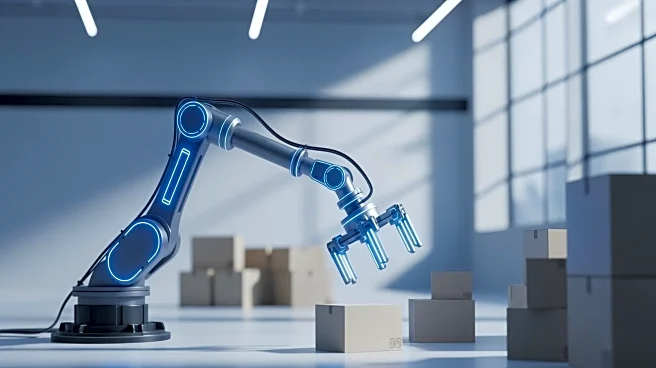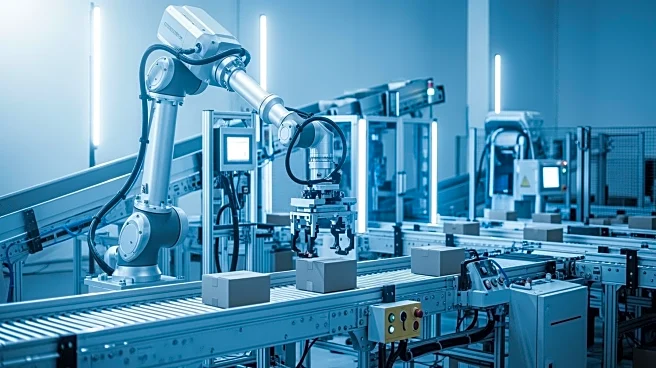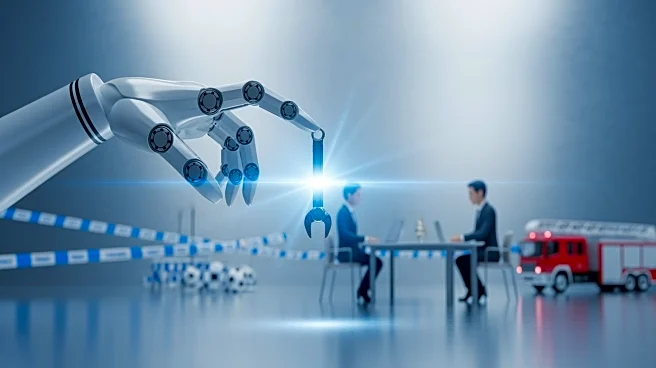What's Happening?
Amazon, the second-largest employer in the U.S., is reportedly planning to significantly increase its use of robotic automation to avoid hiring up to 600,000 workers by 2033. According to internal documents
obtained by The New York Times, Amazon aims to automate 75% of its operations, which could maintain its current workforce levels despite anticipated sales growth. The company has already implemented advanced robotic systems in its Shreveport, Louisiana warehouse, reducing the need for human workers by 25%. Amazon plans to replicate this model in 40 additional facilities by 2027, starting with a new site in Virginia Beach. While Amazon spokesperson Kelly Nantel stated that the leaked documents reflect only one team's perspective and do not represent the company's overall hiring strategy, the company is preparing for potential public backlash by engaging in community events and avoiding terms like 'automation' and 'AI'.
Why It's Important?
The shift towards increased automation at Amazon could have significant implications for the U.S. labor market, particularly in the e-commerce sector. As Amazon leads the way in robotic automation, other major employers like Walmart and UPS may follow suit, potentially reducing job opportunities in warehouse and delivery roles. This move could save Amazon substantial costs, estimated at 30 cents per item packed and delivered, but it raises concerns about job displacement and the future of work in automated environments. While Amazon claims to reinvest savings into new roles, the broader impact on employment and community engagement remains a critical issue for policymakers and labor advocates.
What's Next?
Amazon's plans to expand its robotic fulfillment centers are set to continue, with the company aiming to open 40 new facilities by 2027. As these centers become operational, the company may face increased scrutiny from labor groups and policymakers concerned about job losses. Amazon's strategy to mitigate public concern includes participating in community events and emphasizing 'advanced technology' rather than 'automation'. The company's approach to balancing automation with job creation will be closely watched, particularly as it hires 250,000 workers for the holiday season, which may temporarily offset concerns about long-term employment trends.
Beyond the Headlines
The ethical implications of Amazon's automation strategy highlight the tension between technological advancement and workforce sustainability. As automation becomes more prevalent, companies must navigate the challenges of maintaining a positive public image while addressing the potential societal impacts of reduced employment opportunities. The cultural shift towards automation may also influence consumer perceptions and expectations regarding corporate responsibility and community engagement.











